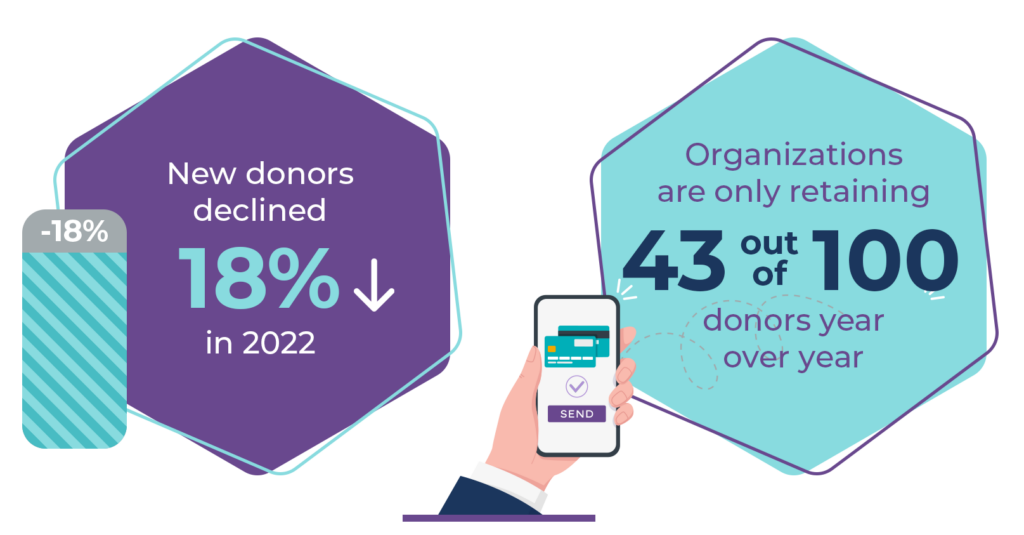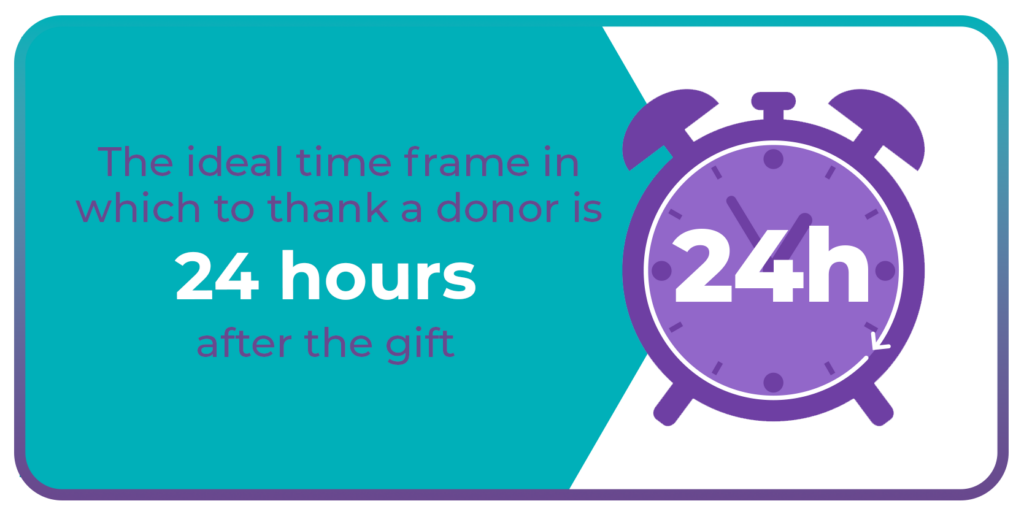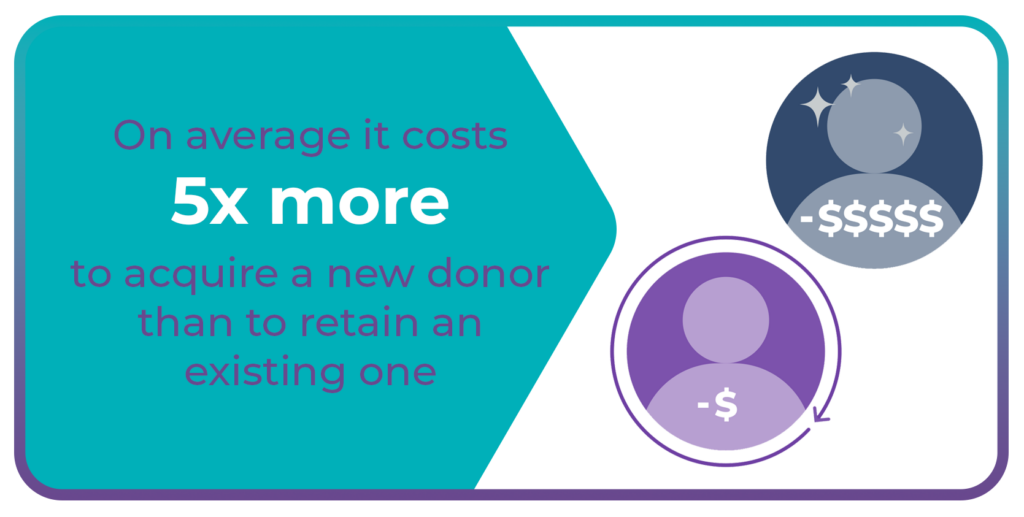Sep 29, 2023
Best Practices and Strategies for Donor Management

Now that you know how vital donor management software is to your organization, learn the best practices and strategies to ensure you’re making the most of the program and improving your relationship with your donors. Learn more about how to implement these donor management best practices.
Personalize communication
Organizing your donors into segmented groups makes it easier to create personalized communications, which help your donors feel like a valuable part of your organization. While you can manage your donors manually, having many donors can make this process challenging and leave you vulnerable to errors. A donor management system can streamline this process and segment your donors based on your specific needs.
You can use the system to tag donor profiles with specifics, such as age, location, donation level, and communication preferences. The system will combine these tags to create a list of contacts for each subgroup.
Once you have properly segmented your donors, you can personalize your communications based on their characteristics. For example, suppose you’re trying to get more donations from people who live within your local area. In that case, you can use donor management software to filter your segments to locate existing and potential donors within your community. You can also filter by contact preference so you know how to personalize their communication. You can create targeted emails, newsletters, or phone calls to encourage their support.
Keep donors up-to-date
Regular communication with donors is one of the most critical donor relationship management strategies to keep them engaged with your organization. Let them know how you’re using their donations to support your cause and update them on what your organization is doing. Since they’re making donations to your nonprofit, they are invested in what you’re doing and want to feel like a valued member of the team.
You can easily create a list of donors using your donor management software and contact them by writing a newsletter containing important updates, pictures of your work, and highlights. Send this newsletter monthly or quarterly to keep your donors informed. Some of these newsletters shouldn’t have any requests for additional donations and include only updates about your organization’s process.
Update your social media frequently, and post to your blog as often as possible. The more communication you can offer donors, the more likely they’ll remain dedicated to your cause and continue to support your future endeavors.
Set SMART goals
Goals give you identifiable steps to make progress within your organization. However, vague goals can only help so much and might leave you without actionable items to help you achieve them. Instead, make strategic goals that give you a clear idea of how you will move forward.
SMART goals are an excellent way to help you reach your objectives and get one step closer to achieving your vision. SMART is an acronym for:
- Specific: Specific goals give you a clear idea of what you need to do and when. Everyone involved in achieving this goal should understand the steps they need to take. The specific goal should include details about what you’re trying to accomplish, why it’s essential to the organization, and how you’ll obtain the goal. For example, rather than saying, “We’re going to increase our number of donors,” you can say, “We’re going to use donor segmentation to find and contact existing and potential donors to increase our number of donors.”
- Measurable: Having measurable goals means identifying when you’ve achieved your objective. Measurable goals help your organization remain accountable as you work to make progress. It’s also easier to determine where you are in each stage of the process, knowing what you still need to do to achieve your goal. For example, you may try to sign up a specific number of new donors or increase your overall number of donors by a certain percentage.
- Achievable: Each goal you make should be attainable. Setting unrealistic goals can discourage your organization’s members and make it impossible to see progress. You can ensure your goal is achievable by determining if your organization has the required resources and time. Your goals also shouldn’t interfere with your ability to attain other goals and should align with your overall mission.
- Relevant: Setting relevant goals will help you make the most progress within your organization. Certain goals will be more appropriate at the moment than others, but that doesn’t mean you can’t set these goals in the future. Focus on what would benefit your organization now and move on to new goals as you make progress. Order each of your goals by relevancy and tackle them in order, creating a seamless process.
- Timely: All goals need a corresponding timeline to ensure that your organization completes them and moves forward. Creating a timeline allows you to reach breakthroughs, giving you time to develop and focus on new goals.
Using donor management software allows you to access accurate and detailed data about your donors. You can use this data to set SMART goals related to your donor journey and track your progress.

Map out the donor journey
Mapping out the donor journey helps you better understand your relationship with your donors to communicate with them more effectively and encourage donor retention. The donor journey map outlines each stage of your relationship and the progression after each donor action. For example, suppose an individual makes a new contribution to your organization. In that case, the next step can be to reach out to the donor and send a personalized thank you note to encourage future engagement.

The donor journey map also keeps your relationship with each of your donors organized and helps you fix any flaws in the process. The first step in the process is creating a donor persona. Start by separating your donors into specific groups using donor segmentation. You can use this information to create a donor strategy and determine the specifics of your communication.
Once you understand your donor persona’s who, what, when, and why, you can create your donor journey map. When you start designing your donor journey map, keep a few things in mind:
- Customize your map: Your donor map should be specific to your organization’s needs. The donor journey map is just a model you can follow, but you can make the most by considering the essential elements. Determine where you can improve, such as donor retention, and then focus on improving them. You should also discuss your donor journey map with your team so they understand your organization’s priorities. Sort your priorities by deciding what improvements will help you progress the most.
- Make it realistic: Nonprofit organizations have limited resources, time, and funding. When working on your donor map, focus on what you can realistically achieve. Prioritize what’s most important for your organization and more urgent than the rest. You can focus on your wants once you’ve outlined your needs.
- Set goals: Once you know how far your nonprofit resources can go, choose a few goals to focus on throughout the year. These goals will be your main priority until you accomplish them. You can also choose secondary goals if you work through your main goals quickly, ensuring that you don’t forget them later.

Focusing on donor journey mapping helps nonprofit organizations retain their donors and sustain their success. The benefits of using a donor mapping journey include:
- Efficient conversion points: Collecting engagement data across your website and other relevant locations can help you determine the conversion point for your organization. You can compare this information to your donor journey map to determine how your donor segments react to your conversion points. You’ll be able to decide on the best course of action to convert various donor personas.
- Improved suggestions for each donor: Understanding the donor journey map can help you make improved suggestions for each donor persona. Your donor map can help you track these suggestions and determine which resonates with your donors and which you can improve.
- Relevant follow-up: A donor map can help you improve your donor relationships by indicating when you need to follow up with your donors after their contributions. You can also determine when you need to keep each donor informed of your progress toward your cause through a newsletter.
- New donor attainment: A donor journey map provides you with helpful insight to learn how you can obtain new donors and build a successful relationship.
- Better relationships: Your donor journey map will indicate ways that you can improve your existing relationships with donors. You can be more thoughtful about your interactions with your donors, helping you make your donors feel more valued within your organization.
Looking for a partner in donor management? Get to know GiveSmart Donor CRM today. From easy-to-use retention rate tracking and AI powered search to donor scoring and wealth management insights, we’re the donor management solution to best support your organization.
Related



